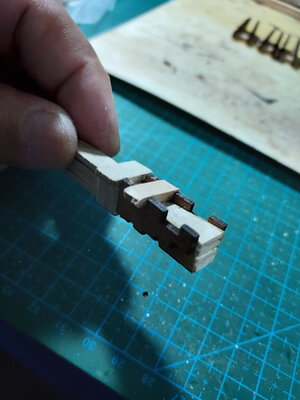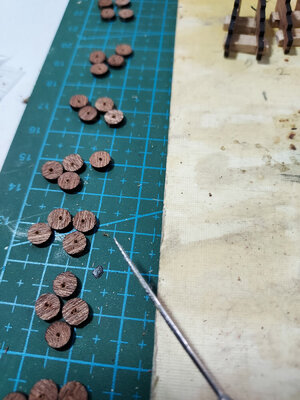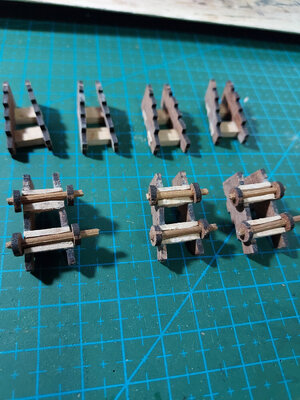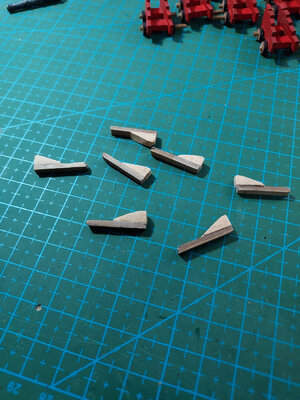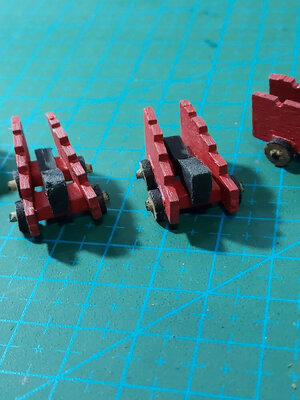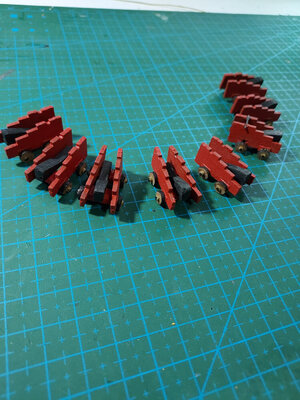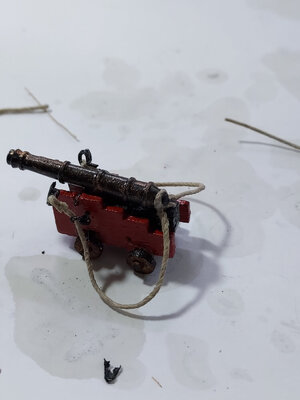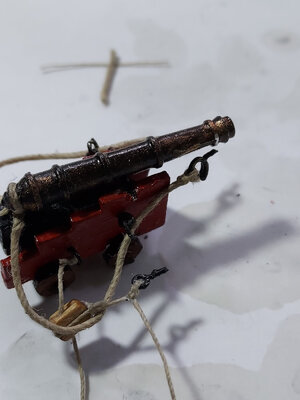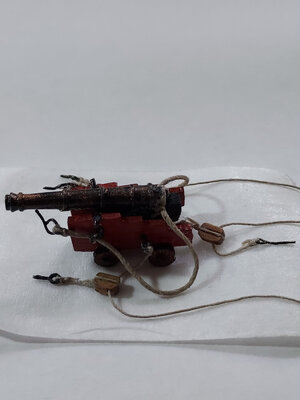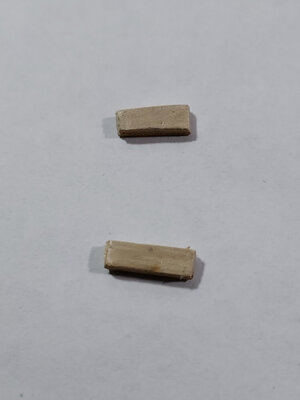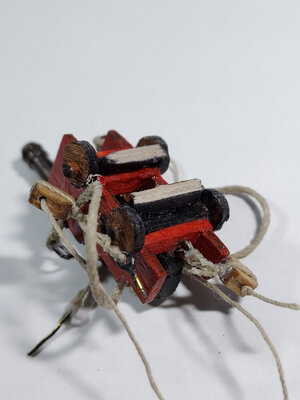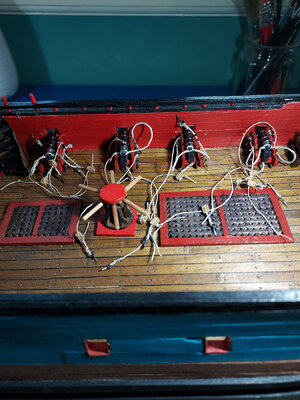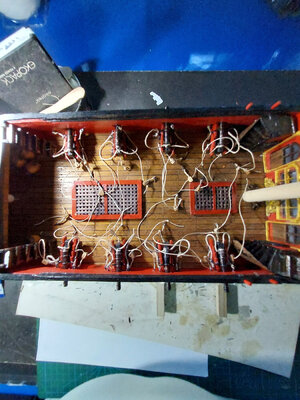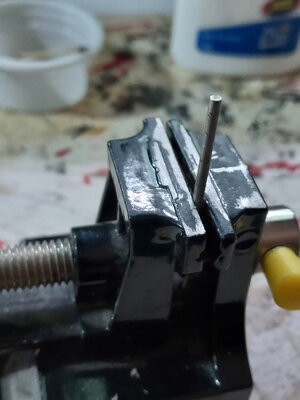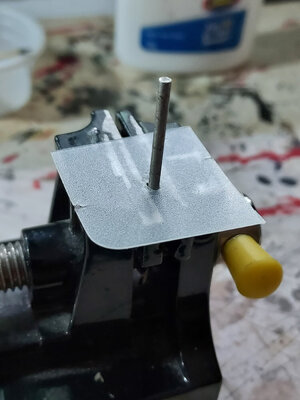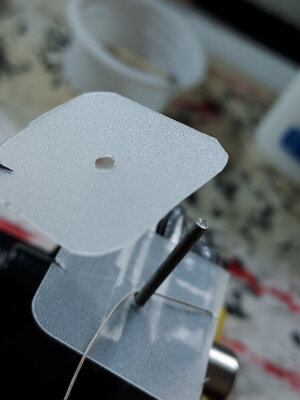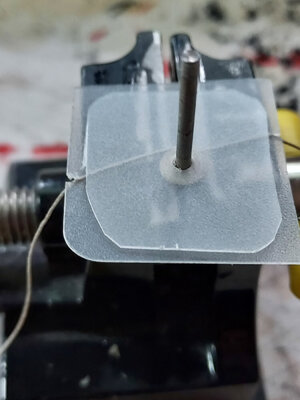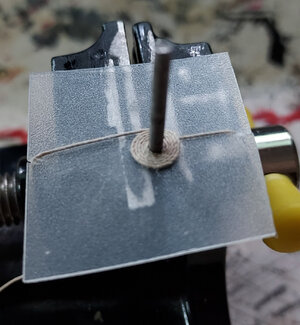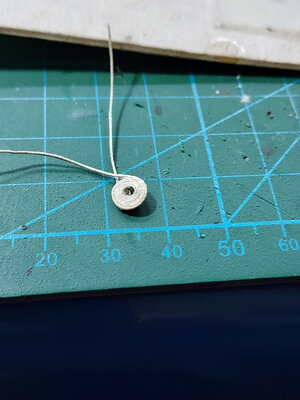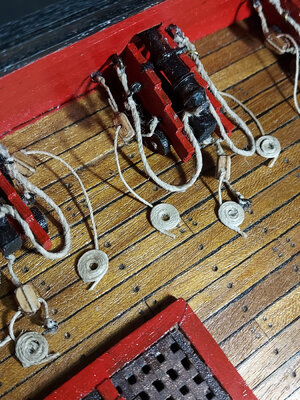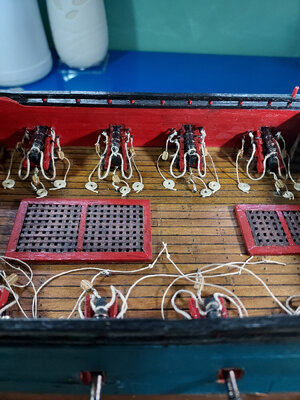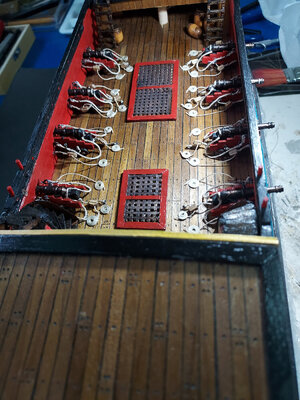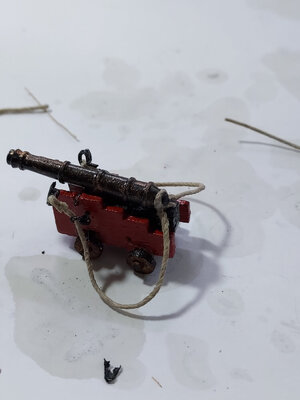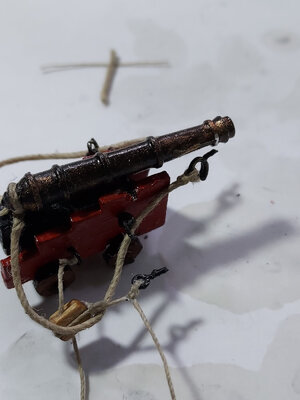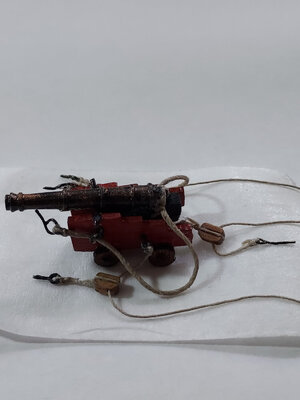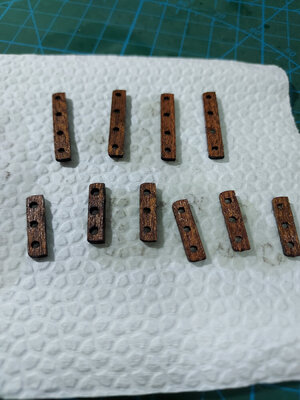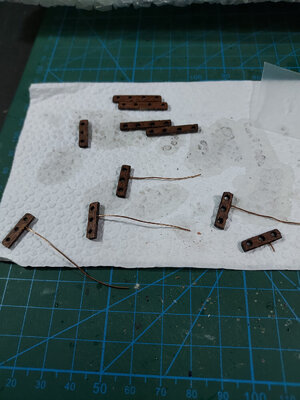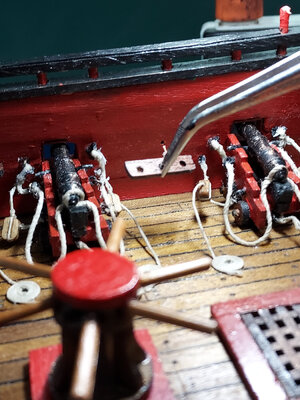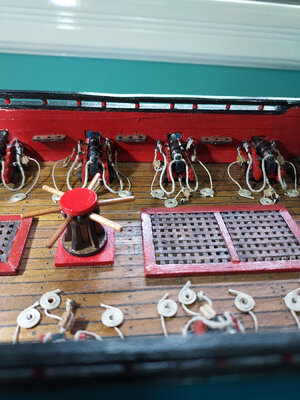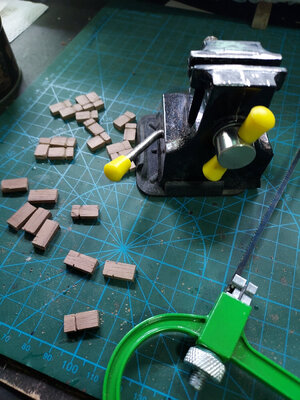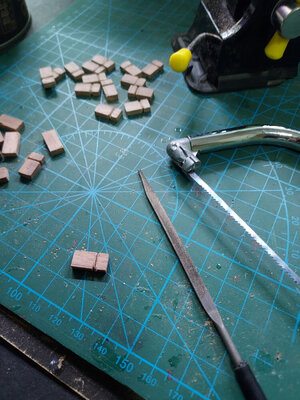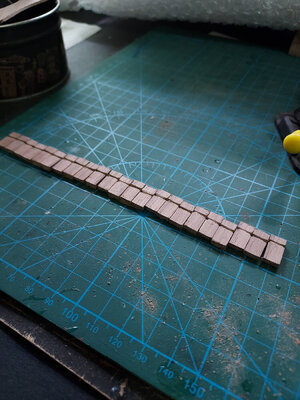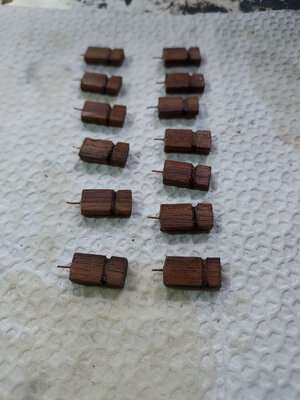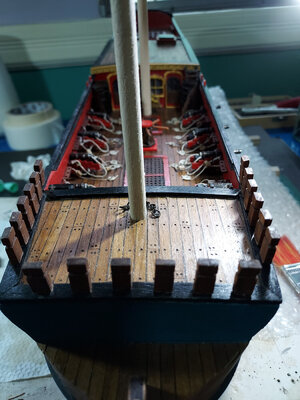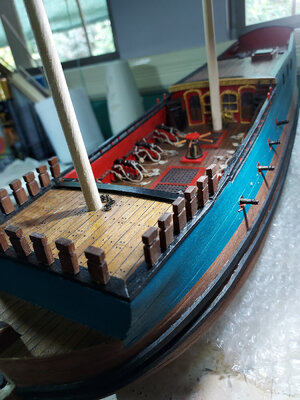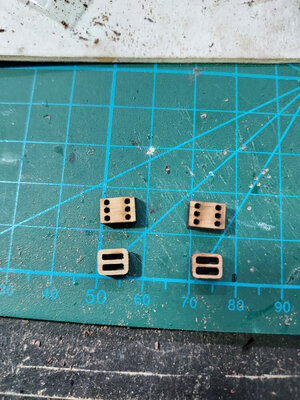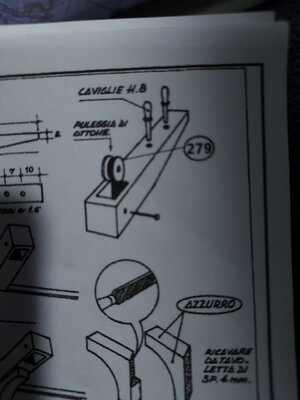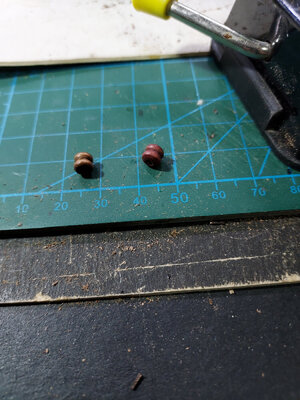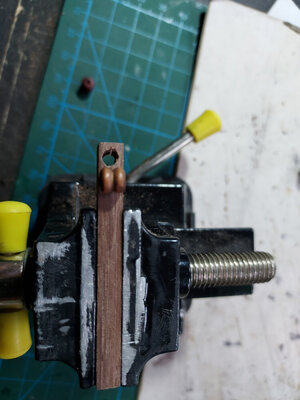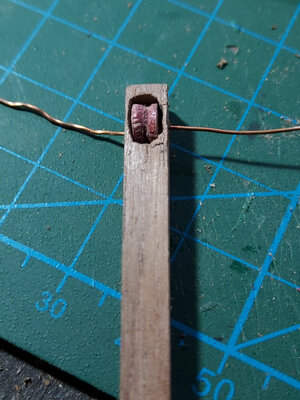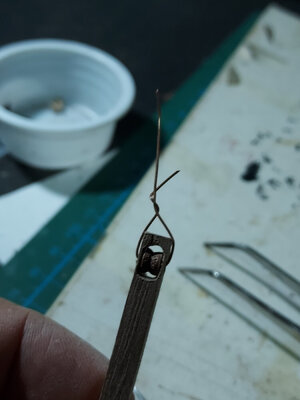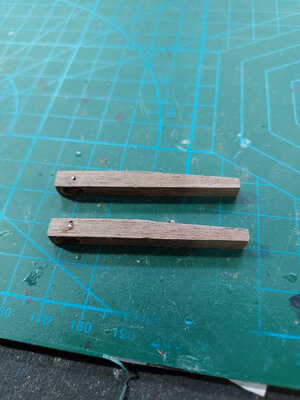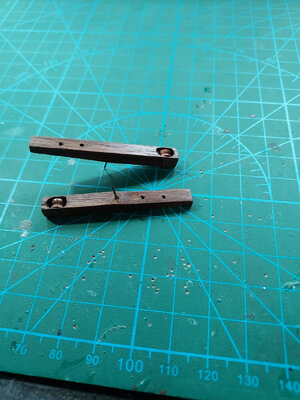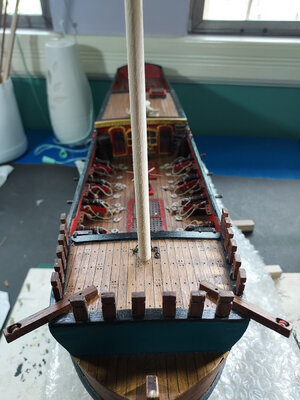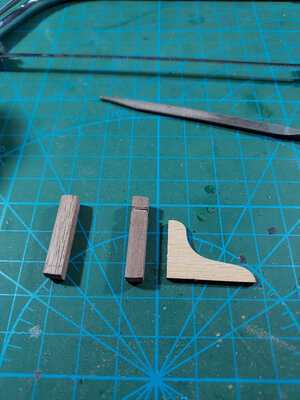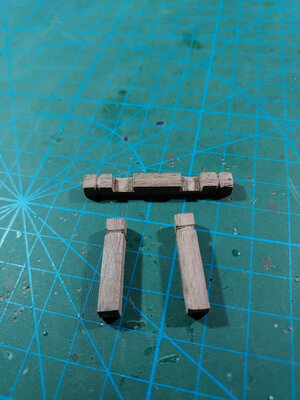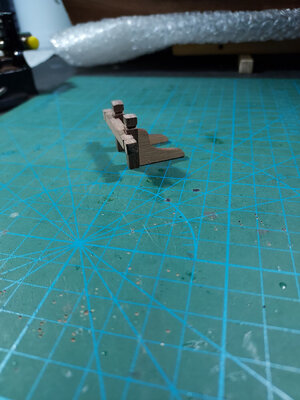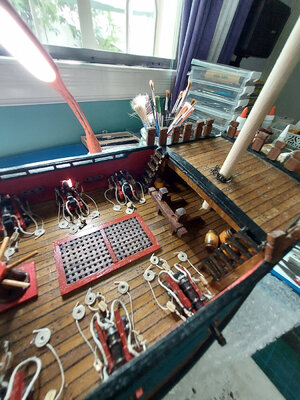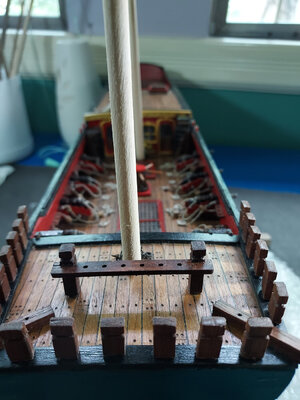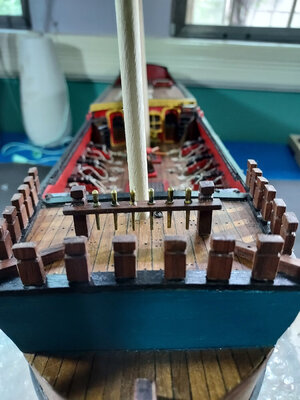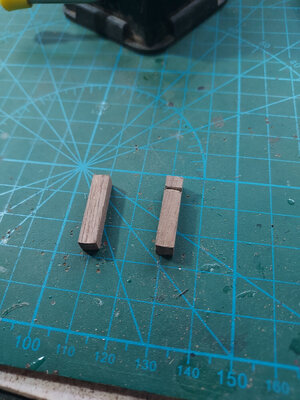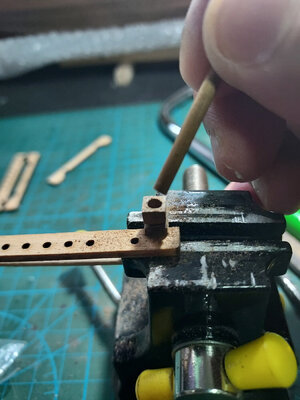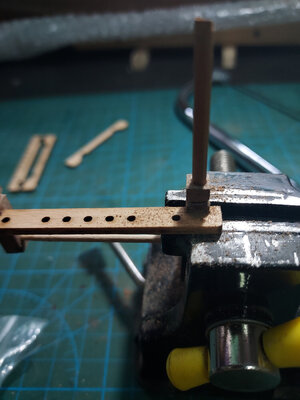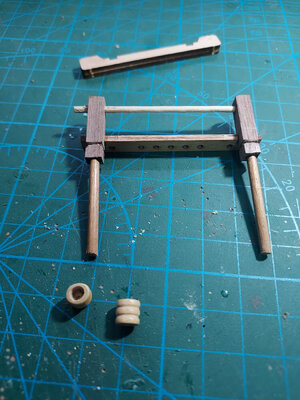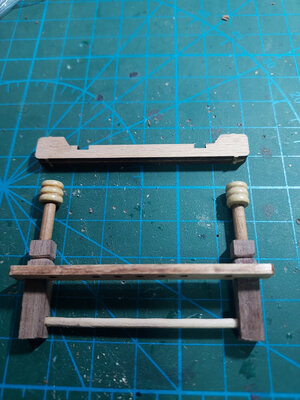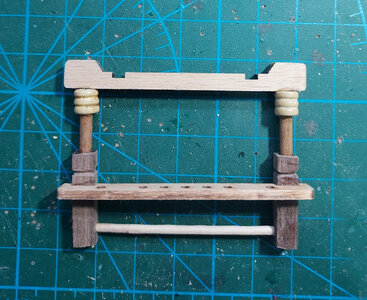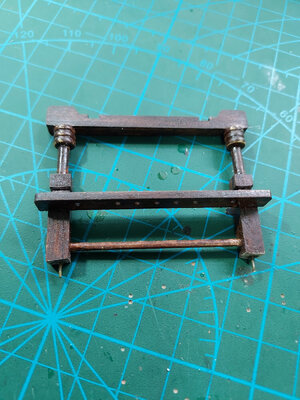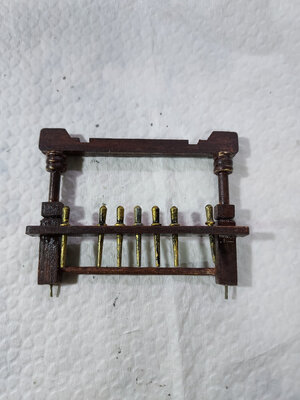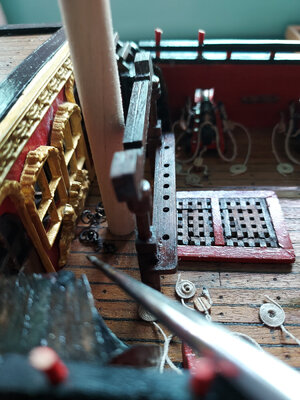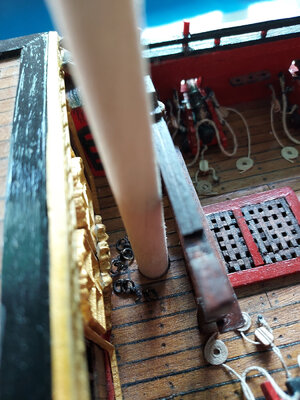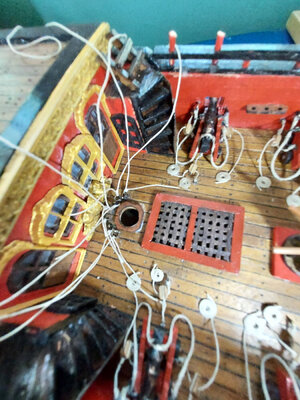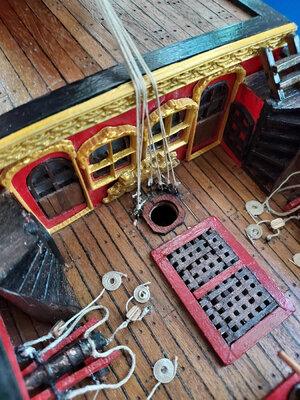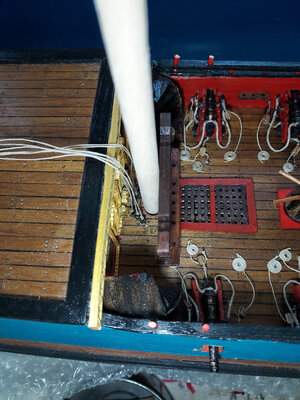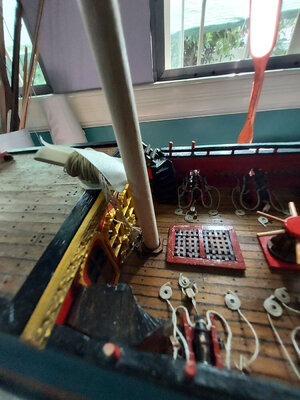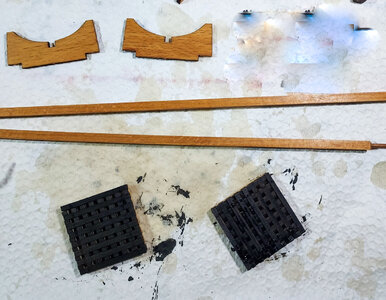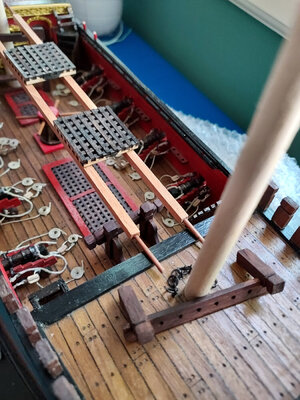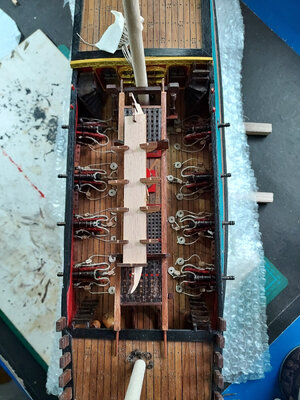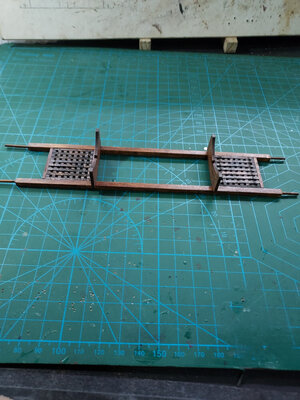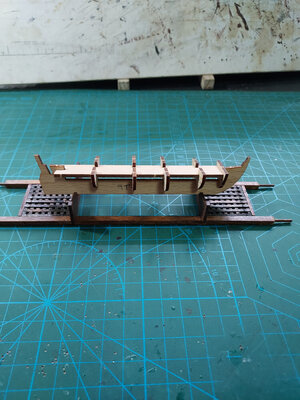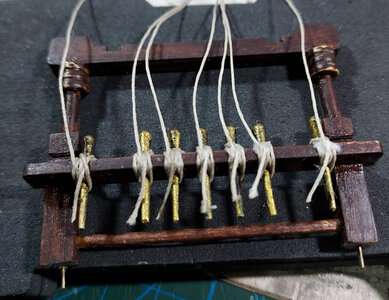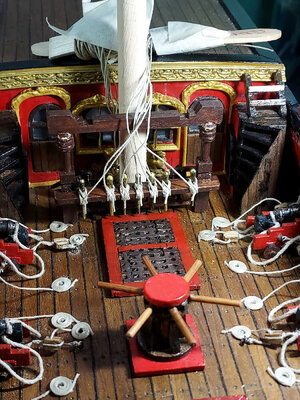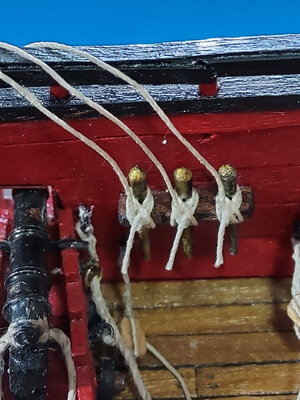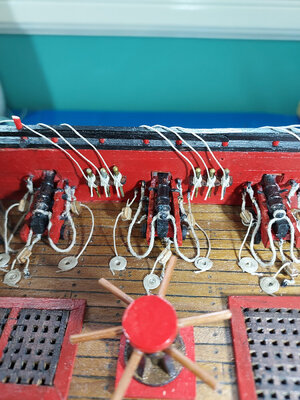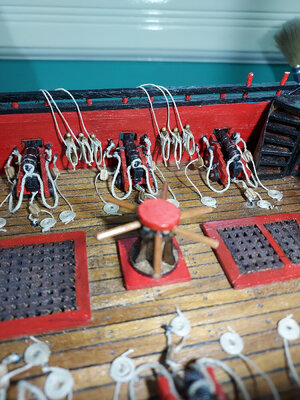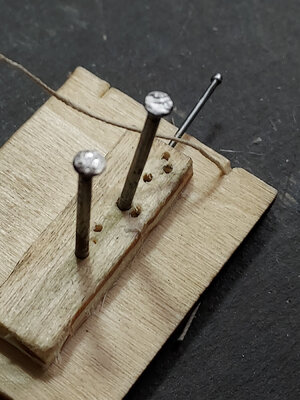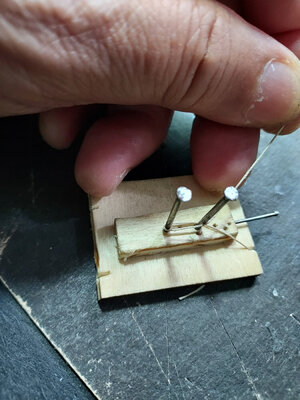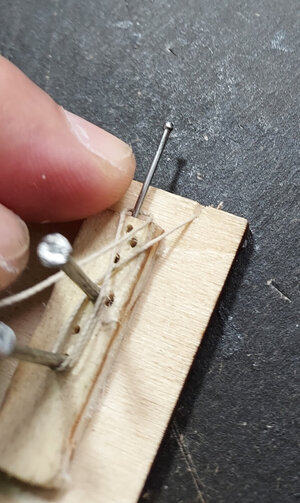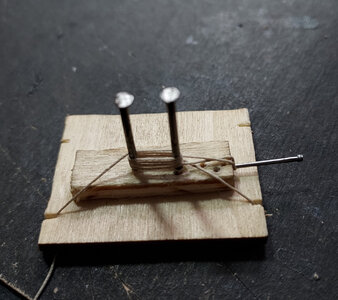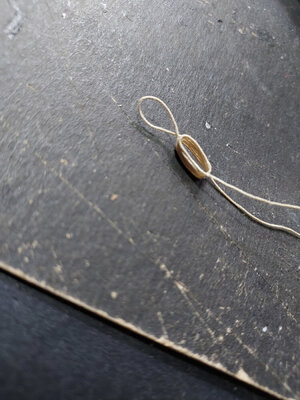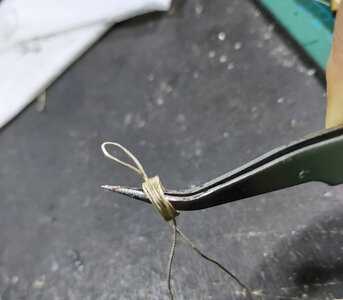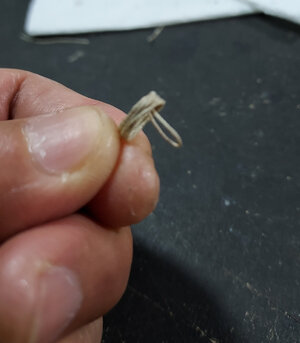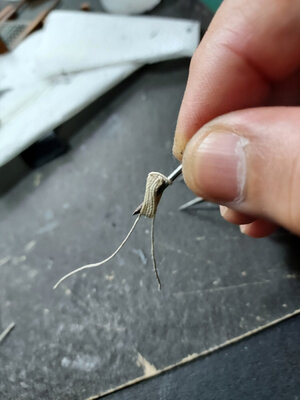- Joined
- Apr 20, 2020
- Messages
- 305
- Points
- 278

Sorry friends, it's been a while since my last post. Been working on a few small deck fixtures and later on I will post my work on the cannons.
I must say, though, that I have not been following the sequence of the build as contained in the instructions. I just try to anticipate which parts to build first, so as not to be in the way of succeeding steps. I also tried to avoid any vertical fixtures(e. g. railings, bell frame) which might break as I do other deck pieces.
I started with mounting the eyebolts that go at the base of the masts. This required a little work in assembling the 2-part eyebolts provided in the kit. Drilled the holes on the deck and glued the pins using gel glue. Note: the masts are just there temporarily.
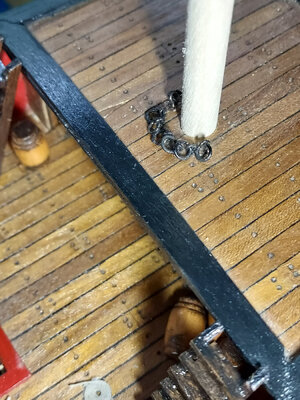
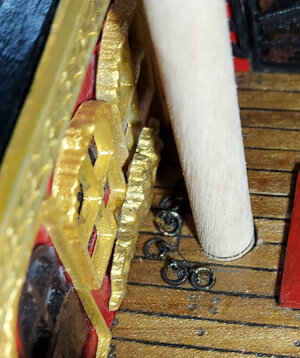
Next I worked on the water pumps. These are real tiny pieces that gave my chubby fingers more trouble than I thought.
These are the parts that came with the kit.
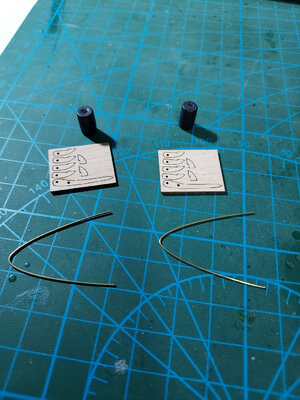
Assembly required dexterity specially when applying the glue to the tiny pieces.
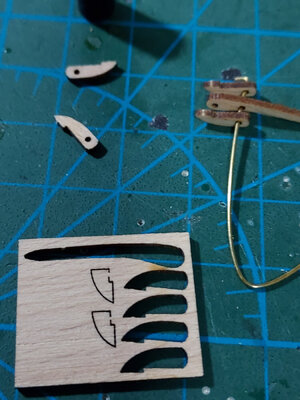
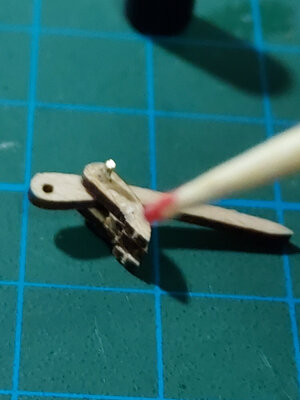
To simulate the band around the pump, I flattened a bit of solder wire and wrapped it around the pump body.
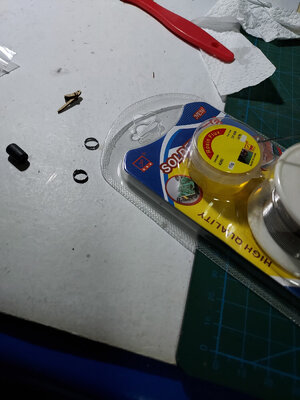
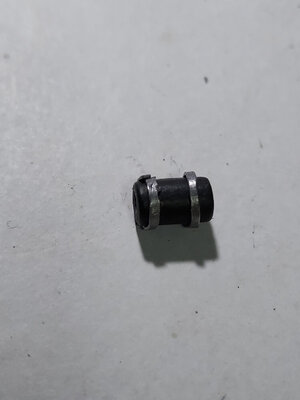
Here's the finished product. I am still struggling with my painting skills, still unable to avoid paint buildup. I used black acrilyc and topped with burnished bronze powder.
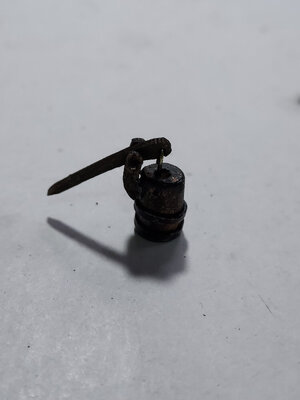
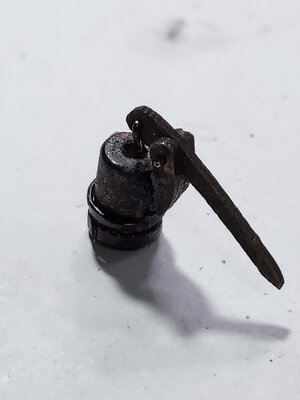
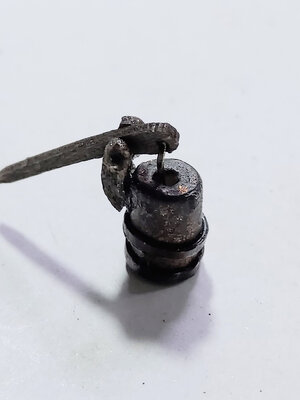
I worked on the ladders leading up to the forecastle. This was fairly straightforward. Also put a couple of barrels underneath for effect.
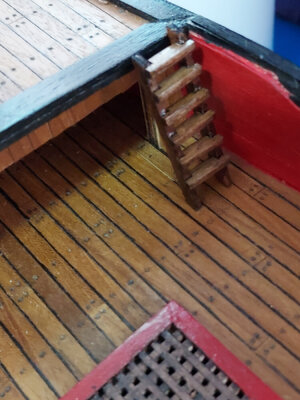
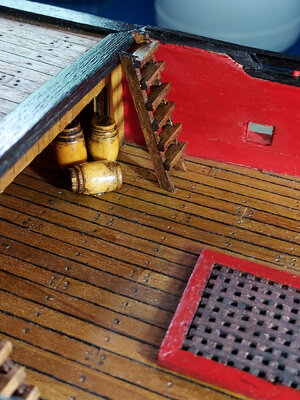
Next was the capstan. This turned out easier than expected. I remember how I struggled with the capstan on my previous Black Pearl build. This time, I assembled the pieces right on the dowel and it came together quite nicely.
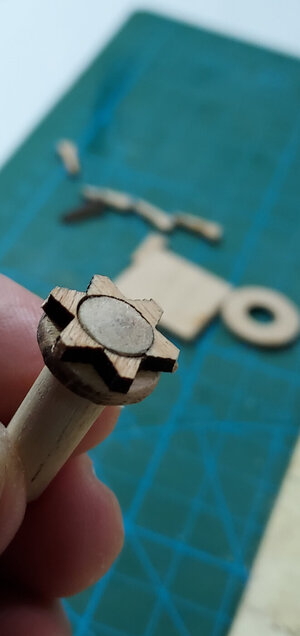
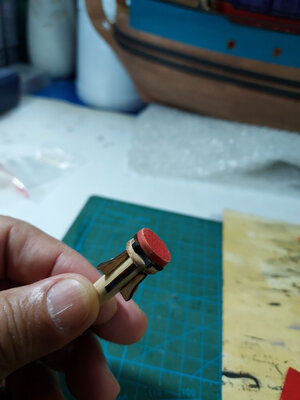
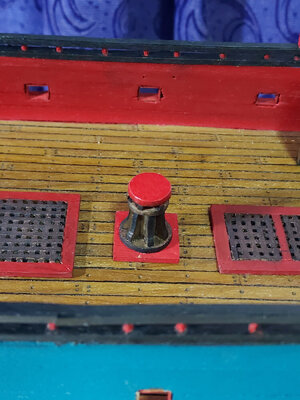
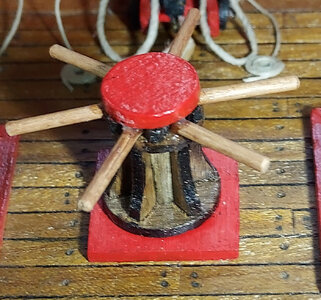
Will show you my work on the guns in my next post. Thanks for dropping in.
I must say, though, that I have not been following the sequence of the build as contained in the instructions. I just try to anticipate which parts to build first, so as not to be in the way of succeeding steps. I also tried to avoid any vertical fixtures(e. g. railings, bell frame) which might break as I do other deck pieces.
I started with mounting the eyebolts that go at the base of the masts. This required a little work in assembling the 2-part eyebolts provided in the kit. Drilled the holes on the deck and glued the pins using gel glue. Note: the masts are just there temporarily.


Next I worked on the water pumps. These are real tiny pieces that gave my chubby fingers more trouble than I thought.
These are the parts that came with the kit.

Assembly required dexterity specially when applying the glue to the tiny pieces.


To simulate the band around the pump, I flattened a bit of solder wire and wrapped it around the pump body.


Here's the finished product. I am still struggling with my painting skills, still unable to avoid paint buildup. I used black acrilyc and topped with burnished bronze powder.



I worked on the ladders leading up to the forecastle. This was fairly straightforward. Also put a couple of barrels underneath for effect.


Next was the capstan. This turned out easier than expected. I remember how I struggled with the capstan on my previous Black Pearl build. This time, I assembled the pieces right on the dowel and it came together quite nicely.




Will show you my work on the guns in my next post. Thanks for dropping in.

